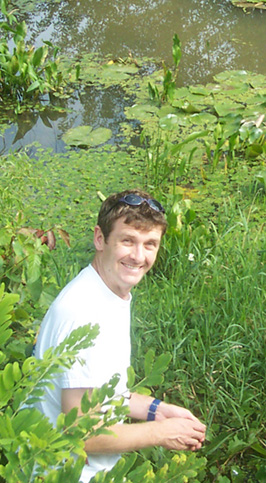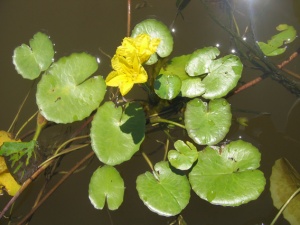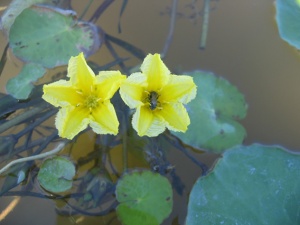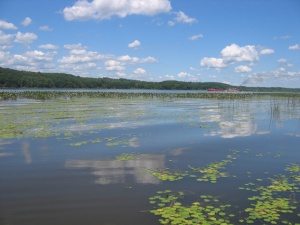Systematics of Menyanthaceae
The aquatic and wetland plant family Menyanthaceae comprises five genera, with species distributed worldwide. Many species in the family, particularly in the genus Nymphoides, are traded in the ornamental aquatic plant trade and consequently have become naturalized outside of their native ranges, with some even considered nuisance weed plants. The research of Nicholas Tippery focuses on the evolutionary relationships between genera and species of Menyanthaceae, with respect to both their vegetative and reproductive morphology.
Preliminary molecular phylogenetic work has revealed that the genera with an emergent habit represent the ancestral condition, while Nymphoides species, which are characterized by floating leaves and submerged rhizomes, have a more derived growth form. I am interested in reconstructing the evolutionary history that gave rise to floating-leaved plants, in particular how the floating leaves and closely associated flowers of Nymphoides evolved from an emergent wetland ancestor. In order to answer this question, I am building a molecular phylogeny for Menyanthaceae, onto which I will map traits important to the evolution of the floating-leaved habit.
I am also interested in the reproductive dynamics of Nymphoides, in which different species are either heterostylous, non-heterostylous, or dioecious. Heterostyly is a curious phenomenon found in many plant lineages, whereby the male and female floral organs are spatially separated in a reciprocal arrangement on different plants. Individual plants have either long styles with short stamens or short styles with long stamens. Moreover, the plants of one floral morph type are prevented from mating with other plants of the same floral morph type by a genetic incompatibility mechanism. In the dioecious species, plants are either entirely male or entirely female, and thus plants of the same type are completely unable to mate.
Both heterostyly and dioecy are adaptations to promote outcrossing (breeding with genetically unrelated individuals). This is especially important for Nymphoides because species are able to reproduce vegetatively (non-sexually) when leaves that have been detached from the parent rhizome end up rooting in the substrate and develop their own roots. Vegetative reproduction generates a pool of genetically identical individuals with whom it would be disadvantageous to mate under a situation where genetic diversity is preferable.
In the northeast, the reproductive biology of Nymphoides is important both for conservation of the native species, N. cordata, and for preventing the spread of a non-native species from Eurasia, N. peltata. I plan to characterize the population genetic structure of both species and determine the extent to which the plants are undergoing sexual versus vegetative reproduction. For the native species, a relatively high degree of sexual reproduction would indicate genetic health in populations that are not especially numerous. In the non-native species, higher genetic diversity could indicate a greater risk of the plant becoming invasive (i.e., weedier). Other indicators of population dynamics include the diversity and effectiveness of insect pollinators, seed viability, and the proportion of individuals that develop from seed versus from plant fragments.
Nicholas Tippery completed his Ph.D. in 2010 under the advisorship of Donald Les.



